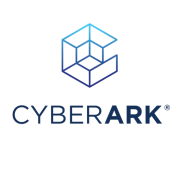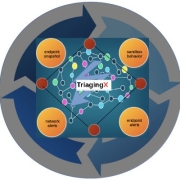Ransomware Protection solutions are designed to safeguard organizations against encryption-based malware threats, providing robust security, recovery options, and monitoring capabilities to defend digital assets effectively.
Ransomware Protection solutions are essential in the evolving digital landscape where cyber threats are sophisticated. They offer comprehensive tools and strategies to prevent unauthorized access, detect intrusion attempts, and swiftly recover data post-attack. By leveraging real-time analysis and threat intelligence, these solutions empower organizations to maintain their operations and minimize disruptions.
What are critical features of Ransomware Protection solutions?Industries such as healthcare, finance, and government often implement Ransomware Protection solutions due to their need for secure data management and regulatory requirements. These sectors benefit from tailored solutions that address specific vulnerabilities and integrate seamlessly with existing infrastructure to fortify their cyber defenses.
Organizations find Ransomware Protection useful due to its capability to protect critical data against ransomware threats. It provides peace of mind, knowing that advanced security measures are in place to prevent unauthorized access and ensure data integrity.
| Product | Market Share (%) |
|---|---|
| Cortex XDR by Palo Alto Networks | 15.7% |
| Cynet | 11.7% |
| VMware Carbon Black Endpoint | 10.3% |
| Other | 62.3% |



























To strengthen your Ransomware Protection strategies, start by conducting regular risk assessments to identify vulnerabilities. Implementing robust security protocols, such as firewalls and intrusion detection systems, can offer additional layers of protection. Regularly update your software and systems to patch security holes and consider managed security services for expert guidance. Training your staff on recognizing phishing attempts plays a crucial role in preventing ransomware attacks.
What role does backup play in Ransomware Protection?Backup is an essential part of Ransomware Protection. Regularly backing up data ensures you have clean copies of your files and systems available in the event of an attack. It's important to use a 3-2-1 backup strategy: three copies of your data on two different media, with one copy stored offsite. This approach minimizes data loss and helps you recover swiftly without paying any ransom. Test your backups routinely to ensure their reliability.
Should I invest in Ransomware insurance?Investing in Ransomware insurance can be a wise decision for businesses looking to mitigate the financial impact of an attack. This type of insurance typically covers ransom payments, data recovery costs, and income loss during downtime. Before purchasing, evaluate your risk level and conduct a detailed policy review to understand coverage boundaries and exclusions. Insurance provides an additional safety net but should complement a solid cybersecurity strategy rather than replace it.
How effective are cybersecurity training programs in preventing ransomware attacks?Cybersecurity training programs are highly effective in preventing ransomware attacks. Employees educated on identifying potential threats, such as phishing emails, can help reduce the risk of malware infiltration. Regular training sessions keep staff informed about evolving tactics used by cybercriminals. Incorporate simulation exercises to test responses and reinforce learning. A well-informed workforce serves as the first line of defense in your Ransomware Protection strategy.
What is the importance of multi-factor authentication for Ransomware Protection?Multi-factor authentication (MFA) is crucial for Ransomware Protection as it adds an extra security layer beyond traditional passwords. Even if credentials are compromised, MFA requires a second verification method, such as a mobile app or biometric scan, deterring unauthorized access. Implementing MFA across your network significantly reduces the chances of a successful ransomware attack. Consider integrating MFA with single sign-on solutions for enhanced security and user convenience.